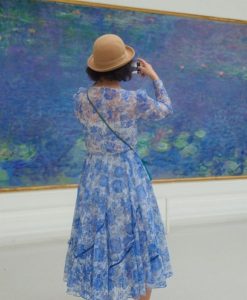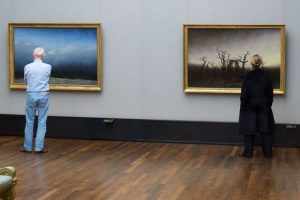
As my adventure in Florence comes to an end, I circle back to the discussion around what makes art so impactful. Though most works, especially those from Renaissance, are static, flat, and unresponsive, I find them personally meaningful. In psychology, the inner stirring that art can inspire is called “aesthetic experience”: a feeling of sublime, and overpowering awe. At the extreme end of the aesthetics spectrum is Stendhal Syndrome (also known as “Florence Syndrome”), which describes the symptoms that sometimes emerge in travelers overcome by artwork.
Stendhal’s Syndrome seems to manifest differently across people, with some victims enduring bouts of severe dizziness, fainting, and heart palpitations, and others experiencing elaborate hallucinations. This year, upon seeing Botticelli’s The Birth of Venus, one man undressed completely, and struck a Venus-like pose, before he was dragged off by museum security. Though clinicians disagree about whether or not this slew of symptoms represents a discrete medical condition, the bizarre somatic reaction known as Stendhal Syndrome is not uncommon amongst travelers to Florence.

What causes some people to be so completely overcome by artwork? Though the answer is still unknown, we discussed two possible explanations. The first is that people tend to to rush through art, especially in Florence, because there is so much to see and so little time. Many travelers, trying to “do Florence” in a couple days, do not have the energy to process the art as completely as they need to. Rushing from the Uffizi to the Medici Palace to the Boboli Gardens, travelers are ultimately buried in unresolved feelings that the works of art evoke. Because these emotions remain unprocessed, people’s bodies shut down, so that they are forced to slow down and acknowledge what they are feeling.
The other explanation is that art evokes an outflow of emotions repressed in everyday life; and because people are not used to such intense feelings, they are overcome by them. We live in a world where the full expression of emotion is not socially accepted. If we saw someone throw down their plate when the restaurant service was slow, or weep deeply when they had a hard day at work, or skip through the halls when their daughter passed her test, we would think they were crazy. Because display rules don’t allow us to experience the full extent of our emotions, we learn to suppress much of what we are feeling.

Yet we have this visceral, often unacknowledged desire, to feel those feelings we have shoved down, causing us to seek out stimuli that will emotionally activate us, like art. Through art, we are allowed a brief outlet for our emotion, empathizing with the subjects in the pieces. In some cases, we actually see our own experiences in the work, inspiring a sort of meta-empathy with ourselves. In other words, our ability to connect with the subjects depicted in art, while retaining some distance from the work, allows us a novel perspective into our own lives. This perspective leads some people to have almost spiritual “aha!” moments of understanding and connectedness upon seeing art. It is possible that this sudden insight and intense emotion overpowers travelers, especially those without an outlet for expression and reflection in their everyday lives, causing Stendhal Syndrome.
Whatever the explanation, and whether we pass out, stay conscious, or get naked, art can be incredibly powerful. Though it is inert and inanimate, art has the capacity to move us. In fact, I think I might be coming down with a mild case of Stendhal Syndrome myself.